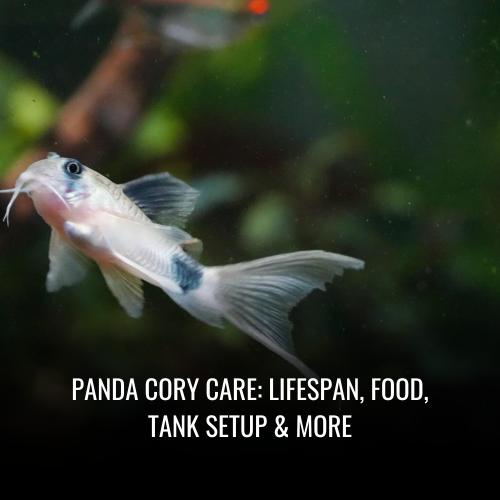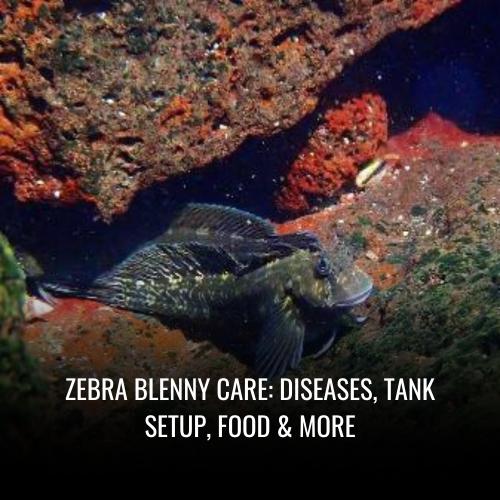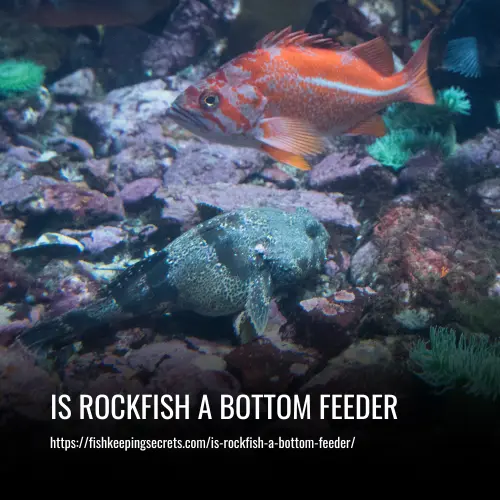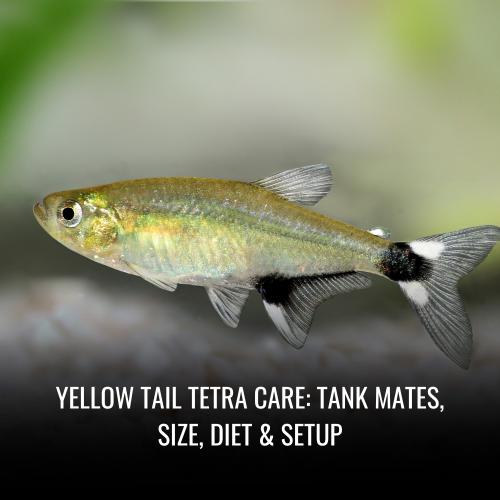Goldstripe headstander Care: Lifespan, Food, Tank Setup
This post contains affiliate links. As an Amazon Associate, we earn from qualifying purchases.
The Indawgyi stream catfish, scientifically named Akysis prashadi, is a unique and fascinating species of catfish found in the freshwater streams and rivers of South Asia. Officially acknowledged and named to honor the Indian ichthyologist B. Prashad, this species stands out in the aquatic world with its distinct physical characteristics and peaceful demeanor.
| Category | Information |
|---|---|
| Scientific name | Akysis prashadi |
| Common name | Indawgyi stream catfish |
| Family | Akysidae |
| Usual size in fish tanks | 5 – 6 cm (1.97 – 2.36 inch) |
| Recommended pH range | 6.5 – 7 |
| Recommended water hardness (dGH) | 2 – 11°N (35.71 – 196.43ppm) |
| Recommended temperature | 19 – 23 °C (66.2 – 73.4°F) |
| Reproduction method | Spawning |
| Origin | South Asia, specifically in Lake Indawgyi, Burma |
| Temperament to own species | Peaceful |
| Temperament to other species | Peaceful |
| Usual place in the tank | Bottom levels |
| Lifespan | 5-8 years |
| Tank size requirement | Not specified |
| Filtration system | Not specified |
| Sexual dimorphism | Females have larger ventral and pectoral fins |
| Substrate cleaning | Prefers sandy substrate; may bury themselves |
Scientific Name
The scientific name of the Indawgyi Stream Catfish is Akysis prashadi. Its scientific name, Akysis prashadi, is derived from the genus name Akysis, which refers to a group of small catfish, and the species name prashadi, which is named after Mr. N.L. Prashad, an eminent Indian ichthyologist.
Average Size
In captivity, Indawgyi stream catfish often grow to an average size of 4-5 inches (10-12 cm), making them a suitable choice for most aquarium setups. In their indigenous habitat, conditions may permit them to reach a slightly larger size of up to 6 inches (15 cm), with younger individuals measuring between 1-2 inches (2.5-5 cm).
Lifespan
A well-cared-for Indawgyi stream catfish can enjoy a lifespan ranging from 5-8 years within an aquarium environment.
Natural Habitat
The Indawgyi stream catfish are dedicated inhabitants of swiftly-flowing streams and rivers. They thrive in clear water environments where the substrate consists predominantly of sand, gravel, and rocks. Although their habitat usually lacks aquatic plants, it may include leaf litter and various underwater structures. The area around Indawgyi is home to a rich diversity of other fish species, creating an intricate and bustling ecosystem for the Indawgyi stream catfish to call home.
Appearance
Appearance of Indawgyi Stream Catfish The Indawgyi stream catfish showcases a slender, slightly compressed body that radiates a wild elegance with its elongated shape. A key characteristic that distinguishes this species is the presence of pectoral spines which, interestingly, lack any serrations, a trait quite rare amongst catfishes.
Looking at their facial features, these stream catfish possess a pair of both maxillary and nasal barbels, adding to their sensory capabilities. Marked by a muted yet complex coloration, their bodies exhibit varying hues of brown, adorned with irregular dark spots that provide excellent camouflage, and a lighter, paler underside creating a striking contrast.
The proportions of their anatomy are rather significant, with pectoral and dorsal fins that are impressively sized in relation to their overall body. To be more specific, these fins generally span around 20.6-23.8% SL. Adding to their distinctive form, these catfish have a pronounced posterior edge of the pectoral spine, measuring at 35-37% HL, further emphasizing their remarkable appearance.
| Feature | Detail |
|---|---|
| Body Shape | Slender, elongated, slightly compressed |
| Pectoral Spine | Prominent, without serrations |
| Barbels | Maxillary and nasal |
| Color | Shades of brown, irregular dark spots, pale underside |
| Fins Proportion | 20.6-23.8% of SL |
| Pectoral Spine Edge | 35-37% of HL |
Behavior & Temperament
As a naturally shy species, the Indawgyi stream catfish may be reclusive and prefer to stay hidden, especially when first introduced to a new environment. With time and a secure, well-decorated tank, they will gradually become more comfortable and venture out to explore their surroundings.
It’s important to note that the Indawgyi stream catfish is relatively peaceful towards other fish, but it may exhibit territorial behavior towards its own species or similar-looking bottom-dwelling fish. Therefore, providing plenty of space and numerous hiding spots within the aquarium will help minimize potential conflicts among tank mates.
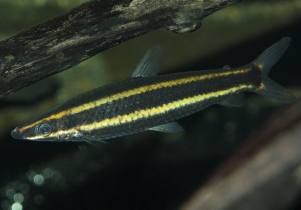
Are Indawgyi Stream Catfish Fin Nippers?
When it comes to peaceful aquarium dwellers, Indawgyi stream catfish (Akysis prashadi) are a prime example of tranquility. Their docile nature means that fin nipping is not a part of their behavioral repertoire.
In the community tank setting, these bottom dwellers are more concerned with scavenging for food than with the fins of their tankmates. Ensuring a stress-free environment with ample hiding places can further discourage any rare tendencies towards nipping, which are typically nonexistent in Indawgyi stream catfish.
Are Indawgyi Stream Catfish Aggressive To Each Other & Other Fish?
Indawgyi stream catfish are known for their peaceful interaction with their own species as well as other tank inhabitants. They are non-aggressive fish that prefer to meander through the lower levels of the aquarium without disturbing others.
In the wild, they are accustomed to the calm inland waters, suggesting a natural predisposition against confrontational behavior. A spacious tank with plenty of hiding spots can help maintain this peaceful demeanor and prevent the occasional territorial spat among conspecifics.
Are Indawgyi Stream Catfish Friendly To Each Other & Other Fish?
The social dynamics of Indawgyi stream catfish are characterized by amiable relations. These catfish sport a friendly attitude towards their counterparts, rarely initiating discord. They mostly keep to themselves or with other peaceful members of their species, coexisting harmoniously in the confines of an aquarium. Their affinity for a serene life makes them a congenial addition to a multi-species tank setup where calmness is echoed by other inhabitants.
Are Indawgyi Stream Catfish Schooling Fish?
Indawgyi stream catfish exhibit schooling behavior when in the presence of their own kind. It is a natural tendency for these fish to seek companionship and form shoals in their habitat. In captivity, grouping these catfish enhances their sense of security and encourages the display of natural behaviors. While they are not obligatory schoolers like some fish species, being in a group of three to five enriches their environment and fosters a dynamic aquatic experience for observers.
Can You Have Just One Indawgyi Stream Catfish In The Tank?
While it is possible to house a single Indawgyi stream catfish in an aquarium, it is not the optimal choice for the fish’s well-being. A solitary existence can lead to shyness and stress, which might inhibit the catfish from exploring and showcasing its natural behaviors.
However, in a well-decorated tank with abundant space and peaceful companions, a lone Indawgyi stream catfish could thrive by establishing its own territory. Nevertheless, to fully appreciate the species’ social nature, keeping them in groups is highly recommended.
Do Indawgyi Stream Catfish Need To Be In Groups?
To emulate the Indawgyi stream catfish’s natural social structure, keeping them in small groups is advisable. Providing a communal living space for these catfish not only mirrors their habitat in the wild but also contributes to their psychological health.
Groups of three or more enable them to engage in their inherent shoaling behavior and can make them feel more secure, leading to increased activity and an enriched aquarium life. Carefully observe the dynamics within the tank to ensure that all members coexist agreeably and adjust the group size if necessary to maintain balance.
Food & Diet
Indawgyi stream catfish (Akysis prashadi) add a diverse array of foods to their omnivorous diet, which includes the consumption of algae. In their wild habitat, they forage on algae growing on rocks and other submerged surfaces, providing them with vital nutrients and fiber.
For aquarium-kept Indawgyi stream catfish, algae-based sinking pellets or wafers can serve as part of their diet, ensuring they receive a balanced nutrition with an essential algae component. While algae should be part of their feeding routine, it’s crucial to remember that a variety of other protein-rich foods are also necessary to maintain a well-rounded diet.
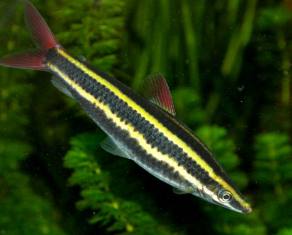
Do Indawgyi Stream Catfish Eat Shrimp?
Indawgyi stream catfish are known for their omnivorous feeding habits, which span across various small crustaceans, including shrimp. Natural hunters of small aquatic prey, these catfish thrive on live or frozen shrimp in captivity. Feeding them brine shrimp, for instance, fulfills a part of their nutritional requirements and stimulates their natural behavior.
Shrimp are particularly valuable for protein and amino acids, supporting the health and growth of Indawgyi stream catfish in domestic aquariums. Nevertheless, offering a variety of food items is key for a nutritious and engaging diet.
Do Indawgyi Stream Catfish Eat Bloodworms?
Bloodworms are a favorite among the food choices for Indawgyi stream catfish. These high-protein morsels are akin to the catfish’s natural prey and are highly beneficial, providing essential nutrients that underpin robust growth and well-being. Being highly palatable, bloodworms are gladly accepted whether offered live or frozen.
This feeding practice not only satisfies their predatory instincts but also nurtures the well-being of the fish, ensuring they get a diet that echoes their wild feeding patterns. It’s a prevalent option that supports an enriched dietary plan for these nocturnal foragers.
Do Indawgyi Stream Catfish Eat Mosquito Larvae?
In the diverse diet of Indawgyi stream catfish, mosquito larvae stand out as a natural food source rich in protein. When kept in aquariums, these fish can be treated with live or frozen mosquito larvae to mimic the dietary conditions they are accustomed to in the wild.
These larvae complement the catfish’s feeding behaviors, supplying a supplemental food choice that supports health and vitality. While mosquito larvae are a great addition to their diet, it’s essential to continue providing a variety of food options for a holistic approach to their nutrition.
Do Indawgyi Stream Catfish Eat Planaria?
Considered a tasty snack for Indawgyi stream catfish, planaria, which are prevalent in many aquatic environments, are a protein-rich food that they naturally consume. In the controlled confines of an aquarium, these catfish will actively hunt planaria, providing a diet that closely resembles their wild feeding habits.
Although planaria are not the sole food source, they are a welcome addition to the diverse diet necessary for the catfish’s general well-being. Introducing planaria as live food occasionally can offer mental and physical enrichment for these inquisitive fish.
Do Indawgyi Stream Catfish Eat Plants?
While the diet of Indawgyi stream catfish generally revolves around small invertebrates and insect larvae, they have been observed to nibble on aquatic plants, particularly the soft and tender varieties. However, plant matter typically constitutes a lesser portion of their dietary intake.
To curb any potential plant grazing, aquarists can ensure their diet is rich with live and frozen foods that satisfy their nutritional needs. Selecting robust aquatic plant species can also reduce the risk of damage, making it possible for aquarists to maintain a healthy, planted tank with these catfish as part of the community.
Sexing: Male vs Female
Identifying the gender of Indawgyi stream catfish is quite straightforward; one can distinguish males from females by the size of their ventral and pectoral fins. Females boast larger and broader pectoral and ventral fins compared to their male counterparts. When observing these catfish, take note of the individuals with notably bigger fins as this is a key indicator of a female fish.
Here’s a simple list to help sex these fish at a glance:
- Female Indawgyi Stream Catfish:
- Larger pectoral fins
- Broader ventral fins
- Male Indawgyi Stream Catfish:
- Smaller pectoral fins
- Less broad ventral fins
This approach of using fin size and shape is a reliable method to determine sex in Indawgyi stream catfish. When looking at a group, the differentiation becomes clear, supporting proper sexing of these intriguing catfish.
Remember, when sexing, focus on the fins:
| Gender | Pectoral Fins | Ventral Fins |
|---|---|---|
| Male | Smaller | Less Broad |
| Female | Larger | Broad |
Understanding these physical traits will ensure accurate identification, vital for breeding practices or simply gaining insight into the composition of a group within a habitat or tank.
Indawgyi stream catfish Tank Mates
Indawgyi stream catfish, scientifically named Akysis prashadi, are a testament to tranquility in aquatic life. These catfish thrive in the company of similar peace-loving tank mates. Small loaches, peaceful dwarf cichlids, and the catfish themselves do best in a social setting, often finding comfort within a group of 3-4.
Here’s a quick guide on their ideal tank companions:
| Suitable Tank Mates | Reason for Compatibility |
|---|---|
| Small loaches | Peaceful bottom dwellers like the catfish |
| Peaceful dwarf cichlids | Will not disturb the catfish |
| Mid to Upper Tank Dwellers (e.g., rasboras, tetras, small barbs) | Occupy different tank strata |
| Invertebrates (Cherry shrimp, Amano shrimp) | Non-aggressive cohabitants |
| Non-territorial Snails | Pose no threat to catfish |
Additionally, gentle schooling fish like rasboras and tetras, along with smaller barbs, are ideal mid to upper level occupants that can share the aquatic space without causing any disruption.
However, it’s essential to sidestep pairing them with larger, aggressive fish or notorious fin-nippers that could cause undue stress or competition, potentially threatening the peaceful existence of these serene creatures. Remember, the key is to maintain harmonious tank dynamics for the well-being of Indawgyi stream catfish and their companions.
Aquarium Setup
Creating an aquarium habitat suitable for Indawgyi stream catfish is about replicating the environment of the serene inland waters they are accustomed to. It’s essential to provide a substrate that resonates with their natural ecosystem. A mix of sandy substrate and pebbles will do the trick, allowing these catfish to exhibit their natural foraging behavior. This combination not only meets their biological needs but also contributes to the overall esthetics of the aquarium.
When configuring the aquascape, remember to add plenty of hideouts. Caves, driftwood, and live plants not only enhance the natural beauty but also afford these shy creatures the security they crave. These elements should be strategically arranged to create a landscape that offers open space for swimming and enough coverage for when they seek privacy.
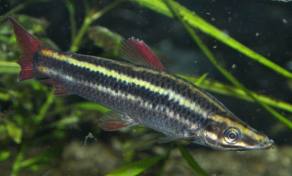
Ideal Tank Size
For a single Indawgyi stream catfish, a tank with a capacity of at least 20 gallons is the minimum to consider. Each additional catfish would require an expansion of 10-15 gallons to maintain a healthy environment. Aiming for a 40-50 gallon tank would be suitable to accommodate a small group, as these catfish enjoy the company of their kind and are more likely to thrive in a spacious environment.
A tank with a length of at least 36 inches is preferred, catering to the catfish’s active nature and length. The emphasis should be placed on the bottom area, where these cats spend most of their time, making a longer tank with a ‘footprint’ more beneficial than one that is tall and narrow.
Ideal Water Parameters
Water conditions require careful attention for the proper care of Indawgyi stream catfish. They are best kept in water temperatures ranging from 68-75°F (20-24°C). The pH level of their aquatic environment should be maintained between 6.5 and 7.5, with soft to moderately hard water having a dH range of 5-12. To maintain these parameters, regular water changes of 25-50% every one to two weeks are necessary, ensuring good water quality and a well-oxygenated living space.
Filtration
Filtration cannot be understated when it comes to the well-being of Indawgyi stream catfish. A top-of-the-line filtration system that offers mechanical, biological, and chemical filtration is vital. This is because these catfish hail from streams with clear, fast-flowing waters which need to be emulated in their aquarium setting.
An optimal flow rate will support the necessary oxygen levels and water turnover required to keep their environment pristine. Regular maintenance, including the cleaning and replacement of filter media, is crucial for sustaining the delicate balance of their aquatic home.
Lighting
Mirroring the lighting of their native habitat is another key aspect of creating a comfortable environment for these stream catfish. They prefer dim lighting, which can be achieved by providing low to moderate levels of illumination. This can be created using artificial lighting or botanic methods such as floating plants, which cast gentle shadows.
A naturalistic approach with indirect lighting promotes well-being, encouraging these creatures to explore their surroundings without the risk of stress associated with overexposure. Avoid strong, direct lighting to prevent any potential adverse effects on their activity or health.
Common Possible Diseases & Prevention
Indawgyi stream catfish, despite their resilience, are not immune to common aquatic ailments. Diseases like ich, fin rot, and various bacterial infections can afflict these fish. Vigilance in preventive care is paramount to keep such issues at bay.
Ensure Water Excellence: Regularly test and maintain water parameters within the ideal range. This practice reduces stress and deters disease.
Tank Maintenance: Adherence to a strict maintenance schedule for the tank, including 25-50% bi-weekly water changes, helps prevent the buildup of pathogens.
Quarantine New Additions: Always quarantine new fish for a minimum of two weeks before introducing them to the main tank. This precautionary step can prevent the introduction of diseases.
Adequate Space and Nutrition: Prevent overcrowding and provide a balanced diet to boost the catfish’s immune system.
Observe and Act: Monitor the fish for any signs of distress or unusual behavior and act promptly. Isolate and treat any sick fish immediately to halt the spread of illness.
Maintaining the health of Indawgyi stream catfish involves proactive measures and a watchful eye. By following these guidelines, you create a safe haven for these captivating creatures.
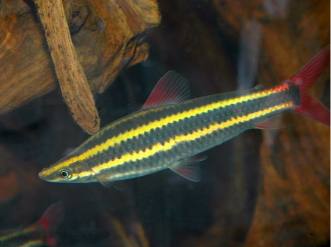
Breeding Indawgyi stream catfish In Aquarium
Breeding Indawgyi stream catfish in an aquarium setting is both fascinating and achievable. Aquarists aiming to replicate the breeding process must focus on recreating the conditions of the catfish’s native habitat.
Creating the Right Environment: A serene environment with adequate hiding spots is essential. Tank mates should be chosen with care to maintain a peaceful atmosphere. Suitable water quality is critical, with parameters finely tuned to mimic the catfish’s natural living conditions.
Triggering Spawning: To induce breeding, simulate the rainy season. This involves a gradual decrease in water temperature alongside an increased water flow, which acts as a natural signal for the fish to spawn.
Recognizing Breeding Signs: Males, generally smaller and leaner, may display brighter colors and show heightened activity when ready to breed.
Care for Eggs and Fry: Post-spawning, it is imperative to separate the parents to protect the eggs from predation. Once hatched, feed the fry on small live foods such as baby brine shrimps, critical for their early development.
By carefully following these steps, aquarists can successfully breed Indawgyi stream catfish, contributing to the conservation and understanding of this intriguing species.
Are Indawgyi stream catfish Easy To Keep?
Indawgyi stream catfish, identified scientifically as Akysis prashadi, present both novice and experienced aquarium enthusiasts with a manageable pet due to their peaceful nature and adaptability. These stream catfish integrate seamlessly within community tanks, thanks to their non-aggressive demeanor. They flourish within a pH span of 6.5-7 and a general hardness scope of 2-11°N, allowing for some leeway in managing water parameters.
Their petite size, ranging from 5-6 cm (1.97 – 2.36 inches), makes them a prime choice for hobbyists with small to medium tanks. Ideal temperature conditions hover between 19-23°C (66.2-73.4°F), aligning closely with ordinary room temperatures, thereby often eliminating the need for additional heating systems. All these factors, coupled with their unique charm, make Indawgyi stream catfish an appealing and undemanding addition to the home aquarium.
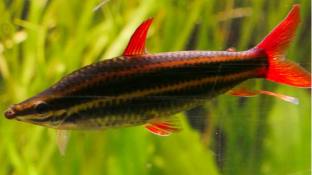
Are Indawgyi stream catfish Sensitive To Water Changes?
Indawgyi stream catfish possess a marked sensitivity to abrupt and substantial shifts in their aquatic milieu, particularly in terms of temperature, pH, and water hardness. These creatures hail from environments characterized by consistency; therefore, swift changes can spark stress and health complications.
Acclimatizing these catfish slowly to new conditions is critical to dodge undue strain. Inconsistent water chemistry has the potential to debilitate their immune response, setting the stage for disease. Keeping a vigilant eye on water quality and making meticulous adjustments is paramount to ensuring the long-term health and comfort of these freshwater natives.
Are Indawgyi stream catfish Sensitive To Ammonia?
Originating from pristine streams and lakes, Indawgyi stream catfish’s tolerance for water impurities, particularly ammonia, is notably low. Exposure to the slightest traces of ammonia can lead to stressful conditions for these fish, manifesting as respiratory distress and gill damage.
Due to their environmental adaptation to low-pollutant waters, the presence of ammonia, even in minimal concentrations, can considerably disrupt their well-being. Continued vigilance through routine water testing is obligatory to maintain ammonia at non-detectable levels, reinforcing the fish’s health within the aquarium habitat.
Are Indawgyi stream catfish Sensitive To Copper?
In their indigenous habitat, encompassing the serene inland waters of Indawgyi Lake and surrounding streams in Burma, Indawgyi stream catfish thrive in water with relatively soft hardness, thereby underscoring their sensitivity to minerals like copper. When introduced to high concentrations, copper can pose a genuine threat to their delicate systems, impairing both respiratory and neurological functions.
The risk is exacerbated by their small stature, making them more susceptible to the toxic impacts of this element. Ensuring copper content remains at a safe threshold is critical. Aquarium caretakers must actively regulate and test water for copper, taking preventive measures to avoid surpassing the threshold that might otherwise compromise the fish’s health and survival.


